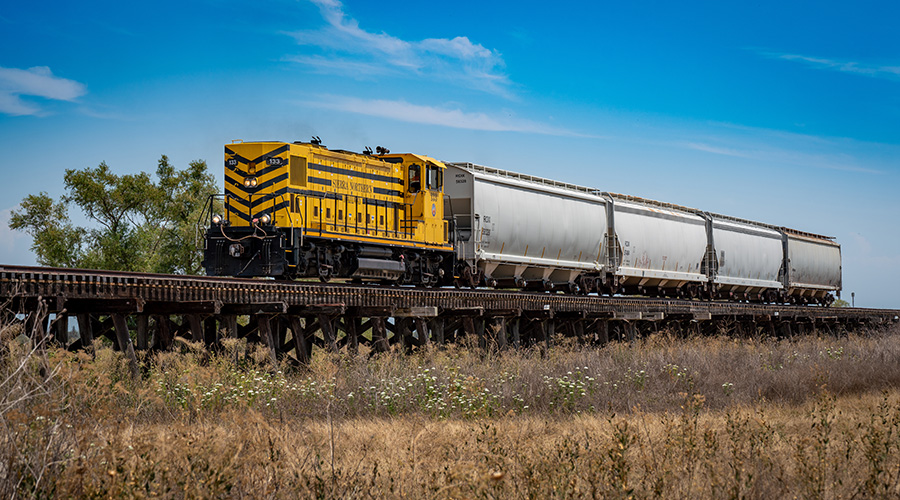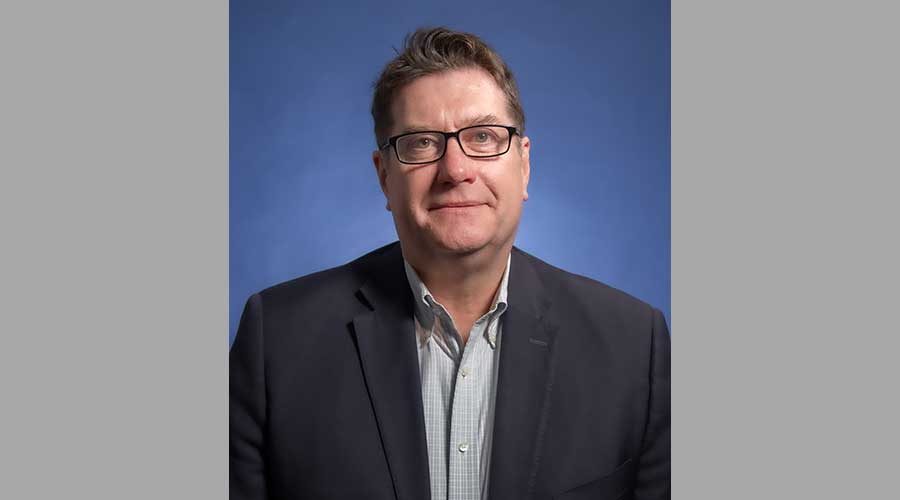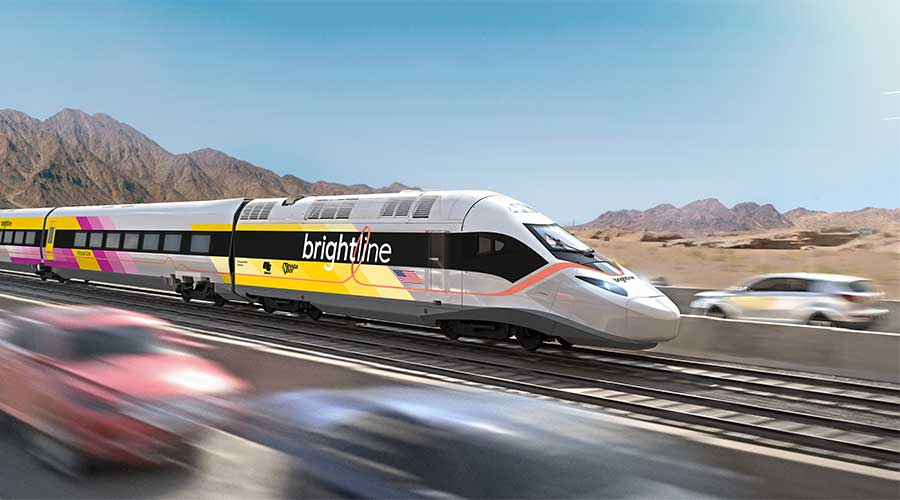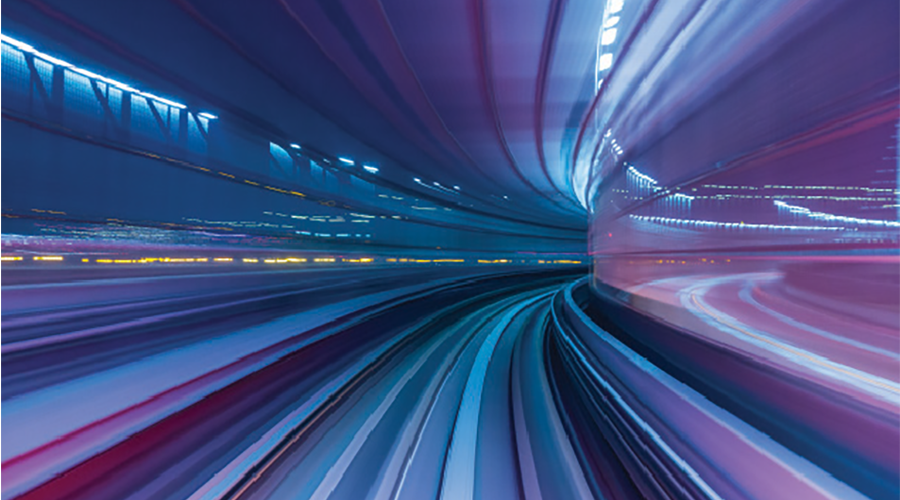Stay updated on news, articles and information for the rail industry
June 2010
Rail News: Passenger Rail
Phoenix's Valley Metro sets sights on expansion - a loss of state funding notwithstanding
— by Katie Berk, Assistant Editor
Valley Metro had invested about a decade's worth of resources into planning and construction of the 20-mile METRO light-rail line that would connect Phoenix, Tempe and Mesa, Ariz., aka, "the valley," when in 2006 construction crews discovered the remains of a Hohokam village beneath the planned location for a stretch of track near "A" Mountain in Tempe.
Crews stopped working while a 10-person team of archeologists unearthed pieces of pottery, stone tools, beads, shell ornaments, human remains and the floors of five dwellings.
Before light-rail construction could continue, the human remains had to be turned over to the Salt River Pima-Maricopa Indian Community for reburial.
"I think we made our way through fairly successfully, considering that we did open on time and on budget," says Valley Metro Public Information Officer Hillary Foose of the $1.4 billion system that entered operation in late December 2008.
But the unexpected find would prove to be just one of many hurdles the agency would have to face as it worked to introduce light-rail service in the region.
Exceeding Maximum Capacity
Transit officials began planning the line in 1996 due to a need they saw in the area — demand for the region's most popular bus route was exceeding its capacity, prompting Tempe residents to vote in favor of a half-cent sales tax to fund transportation initiatives in September 1996.
Phoenix residents would follow suit and approve a four-tenths-of-one-cent sales tax in 2000. However, the idea of building a light-rail line was met with opposition from residents. The Phoenix-Tempe-Mesa area doesn't have the population density of cities such as New York or Boston.
The valley tends to be a car-centric region and many residents wanted to see the money spent on additional bus service or freeway improvements.
"They didn't think light rail was a good fit," says Foose.
Adds Valley Metro Chief Executive Officer Steve Banta: "Transit in and of itself, I think, is still trying to be understood here in the valley, what the opportunity potentially could be."
But valley residents have come around.
Since METRO has been in service, "far and away I think the public sentiment is positive," says Foose.
Ridership stats bear that out. In 2009 — Valley Metro's first full year of operations — METRO surpassed all of the agency's performance projections, which were developed during project planning and reflect the average number of riders across the first year of operations at other transit agencies.
With an average weekday ridership of 34,809, METRO light rail came in 33.9 percent higher than the expected 26,000. Saturdays pulled in an average of 27,662 riders — 33 percent above the projected 20,800 — and Sundays and holidays produced an average of 18,110 riders, a 60.7 percent jump from the 11,267 riders the agency anticipated.
Ridership isn't showing any signs of slowing, either. In April, METRO set a monthly ridership record at 1.2 million trips. The agency also reported its highest one-day ridership at 55,679 on April 5 — the date of the Arizona Diamondbacks' season opener. In addition, METRO in April generated the highest average weekday ridership since the system's opening at 44,932.
"It's pretty staggering compared to what we thought the system was going to produce," says Foose.
A Cash Cow
In addition to ridership figures, agency officials point to the economic impact the METRO has had on the area. Since its opening, light rail has brought $7 billion worth of economic development to the corridor, thereby helping to revitalize areas of the cities, says Banta.
While agency officials are taken aback at just how well-received METRO has been in such a short time, they aren't surprised that the system is doing well.
"It was such a natural area for successful transit already," Foose says.
It doesn't hurt that the corridor connects four of the area's five major employment centers and runs past Arizona State University (ASU) and many high schools and junior colleges, as well as concert and entertainment venues.
The system also features stops near major business districts, which means riders use it for non-commuting purposes, such as running errands, going to restaurants or attending special events.
But it's not just about location. Valley Metro is forming partnerships to encourage ridership.
The agency works with ASU to provide students with subsidized transit passes. Under the plan, students pay $40 per semester vs. the $57 it normally would cost and ASU pays the difference.
The deal seems to be paying off, too. Since the school has a campus in Tempe and another in downtown Phoenix, ASU students make up about 20 percent of Valley Metro's ridership, says Banta.
METRO also recently renewed a pilot program with U.S. Airways Center, home of the Phoenix Suns. Through the program, METRO and arena officials negotiated a per-seat dollar amount that the arena pays the agency. In return, attendees to any arena event can use their event ticket as a light-rail pass for the day of the event.
"I've worked [for transit agencies] in several cities and we could not get the facilities to partner with us anywhere else," Banta says.
Future Plans
But agency officials still have a lot of work ahead of them.
Ultimately, the system is slated to stretch across 57 miles, leaving 37 miles still to be built as part of six separate extensions off the mainline. Construction on the first of these projects — designed to extend further into Mesa, reaching the downtown area — is expected to begin in either 2012 or 2013, with the extension entering service around 2016. Currently, the agency expects all expansion projects to be completed by 2031.
Despite the continued construction plans, METRO staffers now have to switch their mentality from a construction mind-set to that of an operator, says Banta.
They need to ensure they're consistently providing the best service possible so customers keep riding.
"The first year of operation, there are a lot of people who ride your system out of curiosity and may not come back," Banta says.
The goal: Make the riders' experience one that will keep them coming back, especially at a time when the economy is lagging and discretionary spending is still lower than it was pre-recession, he says.
"That's the crux of the challenge: Continuing to provide that high-quality service in times when the economy is not so good so when the customer does take us, they feel they've received value for that fare," Banta says. "When they put money in our farebox, we take that responsibility very seriously."
They can't afford not to. After years of funding public transportation through the state lottery, Arizona this year became one of five states to provide no funding for public transportation. The change cost Valley Metro $20 million, says Banta.
Now, 25 percent of the agency's funding comes from those fareboxes, with the other 75 percent coming from sales tax initiatives in Phoenix, Tempe and Mesa.
"We need to make sure we maintain a state of good repair so we still have something of value to point to when the tax referendum runs out. That way, it's an easy decision for citizens to renew that tax," says Banta. The referendum would take place in 2025.
And the agency will need to make some changes to account for the funding loss. Valley Metro plans to cut service beginning next month.
Starting July 26, the agency will increase peak-period headways from 10 minutes to 12 minutes. And, peak-hour service will run from 7:30 a.m. to 6:30 p.m. vs. the current 6 a.m. to 7 p.m. At all other times, METRO will run at 20-minute headways.
The agency also has added five more holidays — Christmas Eve, the day after Thanksgiving, Martin Luther King Jr. Day, Presidents' Day and Veterans Day — to the list of transit holidays. On those days, trains will run on a 20-minute Sunday schedule.
Keeping the Rider in Mind
Agency officials planned those cuts with great care, Banta says.
That's why the agency first searched internally to determine where it could save money.
"We've got to be very mindful that we don't end up in this death spiral where we continue to increase fares and reduce the service and push our riders away," says Banta.
"We have to be surgical in our reductions and make cuts that impact the customer the least."
Funding uncertainty likely will continue indefinitely, just as it does for many other transit agencies. But one thing Banta is sure of: Valley Metro will continue to grow and serve its community in the coming years.
"The exciting part for me is being able to come here and influence the footprint of transportation over the decade," says Banta.


 2025 MOW Spending Report: Passenger-rail programs
2025 MOW Spending Report: Passenger-rail programs
 Gardner steps down as Amtrak CEO
Gardner steps down as Amtrak CEO
 Guest comment: Oliver Wyman’s David Hunt
Guest comment: Oliver Wyman’s David Hunt
 Women of Influence in Rail eBook
Women of Influence in Rail eBook
 railPrime
railPrime








